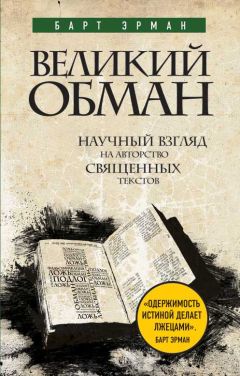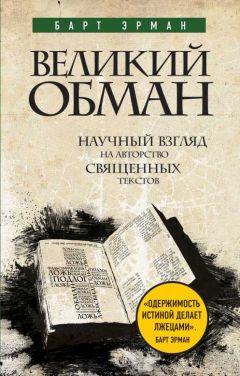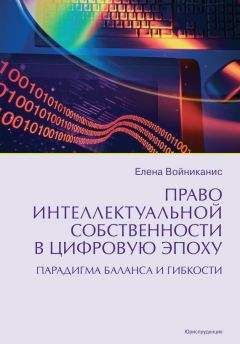Добавьте в друзья своих детей. Путеводитель по воспитанию в цифровую эпоху - Улс Ялда
13. John, “Consumer Socialization of Children: A Retrospective Look at Twenty-Five Years of Research.”
14. J. Anderson and L. Rainie, “Main Report: An In-Depth Look at Expert Responses,”n.d.,http://www.pewinternet.org/2014/05/14/main-report-an -in-depth-look-at-expert-responses/. (This comes from my own response to the survey.)
15. Y.T. Uhls and P.M. Greenfield, “The Rise of Fame: An Historical Content Analysis,” Cyberpsychology (2011).
16. D. Martin, “Child’s Play,” Los Angeles Times, November 22, 2009, http://articles.latimes.com/2009/nov/ 22/ entertainment/la-ca-kids -celebrity22-2009nov22.
17. Y. T. Uhls and P.M. Greenfield, “The Value of Fame: Preadolescent Perceptions of Popular Media and Their Relationship to Future Aspirations,” Developmental Psychology (2012).
18. L. Kaufman, “Chasing Their Star, on YouTube,” New York Times, February 1, 2014, http://www.nytimes.com/2014/02/02/business/chasing-their-star -on-youtube.html?_r=0.
19. K. Wallace, “Teen ‘like’ and ‘FOMO’ Anxiety,” CNN, October 16, 2014, http://www.cnn.com/2014/10/16/living/teens-on-social-media-like -and-fomo-anxiety-digital-life/index.html.
20. V. Taylor, “Modern Teens More Worried About Missing Out Than Fitting In: Survey,” Daily News, November 10, 2014, http://www.nydailynews .com/life-style/teens-worried-missing-fitting-survey-article-1.2005842.
21. James Franco, “The Meanings of the Selfie,” New York Times, December 26, 2013.
22. D. Winneberger, “2013 AAFFPRS Membership Study,” February 2014, http:// www.aafprs.org/wp-content/themes/aafprs/pdf/AAFPRS-2014-Report.pdf.
1. R.E. Bohn and J.E. Short, How Much Information? 2009 Report on American Consumers (San Diego: Global Information Industry Center, University of California, San Diego, 2009).
2. S.A. Brasel and J. Gips, “Media Multitasking Behavior: Concurrent Television and Computer Usage,” Cyberpsychology, Behavior and Social Networking (2011).
3. “Google NGram Viewer,” accessed April 13, 2015, http://books.google .com/ngrams.
4. Watts, “A Teenager’s View on Social Media.”
5. U.G. Foehr, “Media Multitasking Among American Youth: Prevalence, Predictors and Pairings” (Kaiser Family Foundation, 2006).
6. D.F. Roberts, U.G. Foehr, and V.J. Rideout, Generation M: Media in the Lives of 8—18 Year-Olds (Kaiser Family Foundation, March 2005).
7. Rideout, Foehr, and Roberts, Generation M2: Media in the Lives of 8—18 Year-Olds.
8. C. Wallis, The Impacts of Media Multitasking on Children’s Learning and Development (Joan Ganz Cooney Center and Stanford University, 2010).
9. Foehr, “Media Multitasking Among American Youth: Prevalence, Predictors and Pairings.”
10. C. Rosen, “The Myth of Multitasking,” The New Atlantis, 2008.
11. P.E. Dux et al., “Isolation of a Central Bottleneck of Information Processing with Time-Resolved fMRU,” Neuron 52 (2006).
12. E. Ophir, C. Nass, and A.D. Wagner, “Cognitive Control in Media Multi- taskers,” Proceedings of the National Academy of Science 106 (2009): 15583-87.
13. L. Lin, “Breadth-Biased Versus Focused Cognitive Control in Media Multitasking Behaviors,” Proceedings of the National Academy of Science 106 (2009).
14. M. Minear et al., “Working Memory, Fluid Intelligence, and Impulsiveness in Heavy Media Multitaskers,” Psychological Bulletin Review 20 (2013).
15. K. Subrahmanyam et al., “Learning from Paper, Learning from Screen: Impact of Screen Reading and Multitasking Conditions on Reading and Writing among College Students,” International Journal Of Cyber Behavior, Psychology and Learning (2013).
16. Ibid.
17. M. Prensky, “Why YouTube Matters,” On the Horizon, 2010.
18. D. Moore, “About Half of Americans Reading a Book,” Gallup News Service, 2005, http://www.gallup.com/poll/16582/about-half-americans -reading-book.aspx.
19. K. Zickuhr and L. Rainie, Younger Americans and Public Libraries, Pew Research Center’s Internet and American Life Project (Pew Research Center, 2014).
20. Rideout, Foehr, and Roberts, Generation M2: Media in the Lives of 8—18 Year-Olds.
21. L. Rutherford, M. Bittman, and J. Brown, “Effects of New and Old Media on Young Children’s Language Acquisition, Development and Early Literacy: Findings from a Longitudinal Study of Australian Children,” Communication and Community: Proceedings of the 62nd Annual Conference of the International Communication Association, 2012.
22. Subrahmanyam et al., “Learning from Paper, Learning from Screen: Impact of Screen Reading and Multitasking Conditions on Reading and Writing Among College Students.”
23. Common Sense Media, “Zero to Eight: Children’s Media Use in America.”
24. J. Parish-Morris et al., “Once upon a Time: Parent-Child Dialogue and Storybook Reading in the Electronic Era,” Mind, Brain and Education 7 (2013).
25. P.M. Mueller and D.M. Oppenheimer, “The Pen Is Mightier Than the Keyboard: Advantages of Longhand over Laptop Note Taking,” Psychological Science (2014).
26. Lenhart et al., Teens, Social Media & Technology Overview 2015.
27. B. Plester and C. Wood, “Exploring Relationships Between Traditional and New Media Literacies: British Preteen Texters at School,” Journal of Computer-Mediated Communication 14 (2009).
28. B. Sparrow, J. Liu, and D.M. Wegner, “Google Effects on Memory: Cognitive Consequences of Having Information at Our Fingertips,” Science 333 (2011).
1. John Deasy, “Annual Address of LAUSD Superintendent to Adminstrators,” Los Angeles, 2012.
2. Partnership for 21st Century Skills, 21st Century Student Outcomes (Washington DC: Partnership for 21st Century Skills, 2009).
3. L. Cuban, Oversold and Underused (Cambridge, MA: Harvard University Press, 2001).
4. Jacquelyn Smith, “The Top Jobs for 2014,” Forbes, December 12, 2013, http://www.forbes.com/sites/jacquelynsmith/2013/12/12/the-top-jobs -for-2014/.
5. M.Richtel,”InClassroomofFuture,StagnantScores,” NewYorkTimes,September 3, 2011, http://www.nytimes.com/2011/09/04/technology/technology -in-schools-faces-questions-on-value.html?pagewanted=all&_r=0.
6. D.L. Silverall and MLTI Research and Evaluation Team, A Middle School One-to-One Laptop Program: The Maine Experience (University of Southern Maine: Maine Education Policy Research Institute, 2011).
7. “One Laptop Per Child Mission,” Non-Profit, Laptop.org, 2015, http:// one.laptop.org/about/mission.
8. J.P. Cristia et al., Technology and Child Development: Evidence from the One Laptop per Child Program (Institute for the Study of Labor, 2012).
9. Cuban, Oversold and Underused.
10. SRI International, Blended Learning Report (Michael and Susan Dell Foundation, May 2014).
11. B. McCoy, “Digital Distractions in the Classroom: Student Classroom Use of Digital Devices forNon-Class Related Purposes,” [email protected] of Nebraska—Lincoln 71 (2013).
12. T. Karsenti and A. Fievez, The iPadin Education: Uses, Benefits, and Challenges— A Survey of 6,057 Students and 302 Teachers in Quebec, Canada (Montreal, Canada: CRIFPE, 2013).
13. Ibid.
14. D.E. Clayson and D.A. Haley, “An Introduction to Multitasking and Tex- ting: Prevalence and Impact on Grades and GPA in a Marketing Class,” Journal of Marketing Education (2012).
15. R.H. Kay and A. LeSage, “Examining the Benefits and Challenges of Using Audience Response Systems: A Review of the Literature,” Computers in Education 53 (2009).
16. E. Kaasens-Noor, “Twitter as a Teaching Practice to Enhance Active and Informal Learning in Higher Education: The Case of Sustainable Tweets,” Active Learning in Higher Education 13 (2012).




